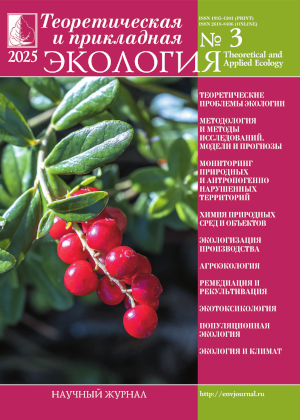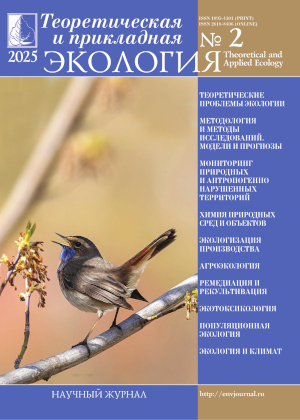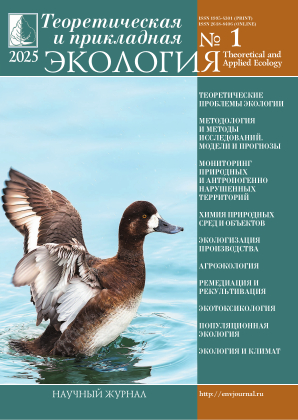 ISSN 1995-4301
ISSN 1995-4301(Print)
ISSN 2618-8406
(Online)
Online version of the journal
|
Macrophyte thicket ecosystems in the Neva Bay: a response to hydraulic construction impact |
||||
| V.A. Zhigulsky, V.F. Shuisky, E.Yu. Chebykina, D.V. Zhigulskaya | ||||
| Section: Monitoring of natural and anthropogenically disturbed areas |
||||
| The first stage results (2016–2020) of the scientific research programme of macrophyte thickets ecosystems (socalled “reed beds”) in the Neva Bay of the Gulf of Finland have been summed up. The programme is carried out by the environmental design company “Eco-Express-Service” LLC (initiator, coordinator, sponsor and main executor) with the participation of a group of St. Petersburg biologists. Observations are carried out at 16 model parcels of thickets (the area of each plot is about 1 km2 ). Maps of phytocenoses, fish spawning places, migratory stopovers for aquatic and semiaquatic birds, as well as summary maps of the resulting ecological value were compiled.
According to main indicators, the macrophyte thickets ecosystems that have appeared before and during Saint Petersburg Flood Prevention Facility complex construction (1979–2011) turned out to be the most environmentally valuable. The last ones have some advantages, since they are still less dense, more mosaic, and therefore available for fish and birds settlement not only along the periphery of plant massifs, but also inside them. Younger thickets that have appeared in new biotopes in the past decade are much less actively used by the biota, but they represent a valuable reserve for future macrophyte thickets ecosystems. The sensitivity of macrophyte thickets to hydraulic works and their consequences increases with the age of thickets: the youngest ecosystems formed under the conditions of technogenic impact are the most resistant. On the whole, it should be noted that macrophyte thickets are highly resistant to hydraulic works, except their direct mechanical destroying. The projective cover degree of biotopes by vegetation depend much less on the ongoing hydraulic works, than on the general trend of its technogenic succession. |
||||
| Keywords: macrophytes thickets, reed bed, Neva Bay, Eastern part of the Gulf of Finland, hydraulic works, aerial survey |
||||
| Link | ||||
  |
||||
| Article published in number 3 for 2023 DOI: 10.25750/1995-4301-2023-3-088-093 |
||||
|
|
36, Moskovskya street, Kirov, 610000, Editorial Board "Theoretical and Applied Ecology." Phone/fax: (8332) 37-02-77 e-mail: envjournal@vyatsu.ru The journal was founded in 2007 |
||||||




 Select viewing options
Select viewing options